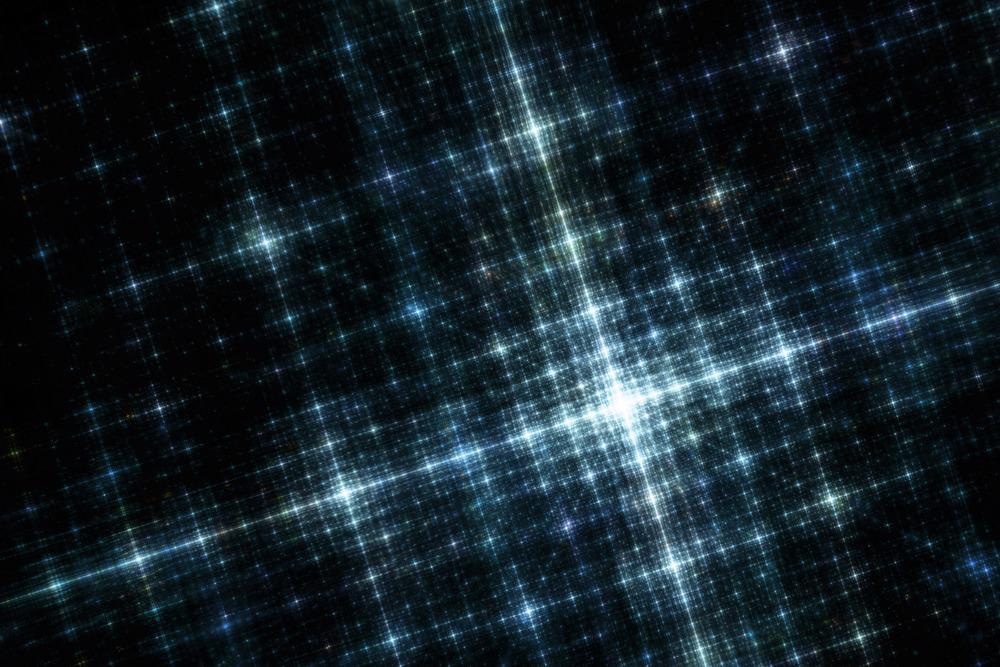A team of researchers recently published a paper in the journal ACS Applied Nano Materials that demonstrated the feasibility of using novel lead-free perovskite nanocrystals for optoelectronic applications.

Study: Lead-free Rb2SnCl6:Bi Perovskite Nanocrystals for Luminescence Emission. Image Credit: R.T. Wohlstadter/Shutterstock.com
Limitations of Lead-based Perovskite Nanomaterials
Lead-based perovskite nanomaterials are increasingly used in optoelectronic devices owing to their excellent properties such as high absorption coefficients, tolerance to defects, and photoluminescence quantum yield (PLQY). However, the low photostability of these conventional perovskites in an ambient working environment and the rising toxicity of lead have limited their commercial applications.
Thus, identifying environmentally stable and synthetically accessible lead-free perovskites that can provide comparable physicochemical properties to lead-based perovskite nanocrystals is necessary to realize several optoelectronics applications.
A New Way to Obtain Lead-free Perovskite Nanocrystals
Scientific advancements in recent years have displayed the ability to fine-tune band gaps and optical properties of perovskites by precisely controlling their compositions, anions, cations, size, and shape. Substantial efforts have been made to develop isoelectronic nanostructures in which the lead cations were replaced by singly and triply charged cations.
These nanostructures are referred to as double or elpasolite perovskite nanocrystals. Evaluation of these nanostructures and their properties can provide important information about the physicochemical principles that influence the material characteristics and photostability of metal halide perovskites.
In the last few years, colloidal semiconductor nanorods, nanofibers, and nanocrystals were developed to generate the quantum confinement of charge carriers. For instance, lead-free CsSnX3 perovskite nanocrystals with finely tunable photoluminescence and uniform diameters demonstrated enhanced photovoltaic efficiency.
Although Rb2SnCl6 nanocrystals can serve as an alternative to lead-based perovskite nanocrystals, the complex synthesis process and unstable nature of the crystals have limited their effectiveness in practical applications.
Synthesis of Novel Lead-free Perovskite Nanocrystals
In this study, researchers synthesized lead-free bismuth-doped Rb2SnCl6 (Rb2SnCl6:X%Bi) and undoped Rb2SnCl6 perovskite nanocrystals using the hot-injection method.
Oleic acid (OA) and oleylamine (OLAM) were used as ligands and octadecane as a solvent, respectively. Tin (IV) chloride (SnCL4) and tin (II) chloride (SnCl2) were used as non-toxic tin precursors during the synthesis process.
Several production parameters, such as ligands, dopant concentrations (Bi3+), and tin precursors were optimized using the X-Ray diffraction (XRD) measurements to enhance the photostability, crystallinity, and PLQY of the Rb2SnCl6:Bi perovskite nanocrystals.
Rubidium Oleate Preparation
Rubidium carbonate, OA, and octadecane were mixed in a three-necked round-bottom flask, and the mixture was heated at 120 degrees Celsius for one hour under a vacuum to eliminate moisture. The resultant sample was again heated for two hours at 150 degrees Celsius in a nitrogenous atmosphere to facilitate a complete reaction between rubidium carbonate and OA to obtain clear solutions of rubidium oleate.
Synthesis of Novel Rb2SnCl6:X% Bi and Rb2SnCl6 Perovskite Nanocrystals
Octadecane, OA, OLAM, and SnCl2 were mixed in a three-necked round-bottom flask and the mixture was heated at 100 degrees Celsius for three hours under a vacuum. Subsequently, the resultant sample was heated under a nitrogenous atmosphere at 230 degrees Celsius. The rubidium oleate solution was injected quickly into the flask under vigorous stirring using a glass syringe.
After 10 minutes of reaction, the temperature of the reaction mixture was cooled to 20 degrees Celsius in a water bath, and the mixture was subjected to centrifugation at 4000 revolutions per minute for 10 minutes to separate the Rb2SnCl6 nanocrystals from the solution.
The Rb2SnCl6:Bi nanocrystals were synthesized by adding different concentrations of bismuth trichloride to the reaction mixture. Both nanocrystal precipitates were stored in a vacuum before their characterization.
Characterization of the Synthesized Samples
Transmission electron microscopy (TEM), general structural analysis system (GRAS-II), X-ray photoelectron spectroscopy (XPS), X-Ray absorption near edge structure (XANES) and extended X-Ray absorption fine structure (EXAFS) analyses, and Fourier transform infrared spectroscopy (FT-IR) were used to characterize the synthesized nanocrystals. A spectrometer with an integrated sphere was utilized to determine the PLQY.
Significance of the Study
Highly crystalline Rb2SnCl6:Bi and Rb2SnCl6 perovskite nanocrystals were synthesized successfully using the hot-injection method. The nanocrystals demonstrated significantly enhanced fluorescence stability and intensity due to the addition of Bi dopant.
Structural characterization demonstrated the passive attachment of ligands on the nanocrystal surface. Researchers effectively optimized the design of the nanocrystals using the XRD measurements to improve the PLQY.
The slight blue luminescence emission spectra peaking at 426 nanometers with full width at half-maximum (FWHM) of 65 nanometers and a stokes shift of 70 nanometers was observed at four percentage dopant/Bi concentration (Rb2SnCl6:4%Bi). Additionally, the Rb2SnCl6:4%Bi perovskites displayed 21 percent PLQY compared to 9 percent in undoped Rb2SnCl6 nanocrystals.
The Rb2SnCl6 nanocrystals displayed characteristic peaks 3d3/2 and 3d5/2 of tetravalent Sn at 496.3 and 487.8 electron volts, respectively, while the Rb2SnCl6:4%Bi nanocrystals displayed characteristic peaks 4f5/2 and 4f7/2 of Bi at 164.8 and 159.6 electron volt, respectively. Moreover, the Rb2SnCl6:4%Bi nanocrystals also demonstrated 17 percent photoluminescence stability.
Taken together, the findings of this study provide a consistent approach toward the design optimization of the lead-free perovskite nanostructure/optoelectronic material design to incorporate enhanced photoluminescence properties for in vivo imaging, solar cell, and light-emitting applications.
Reference
Qamar, S. A., Lin, C. C., Lin, T-W. et al. Lead-free Rb2SnCl6:Bi Perovskite Nanocrystals for Luminescence Emission. ACS Applied Nano Materials 2022. https://doi.org/10.1021/acsanm.2c01647
Disclaimer: The views expressed here are those of the author expressed in their private capacity and do not necessarily represent the views of AZoM.com Limited T/A AZoNetwork the owner and operator of this website. This disclaimer forms part of the Terms and conditions of use of this website.